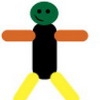I've been trying to solve this design conundrum for a while but have yet to come up with a solid solution. I have craftable weapons/armor in my game. Most games I've played that have craftable weapons generally follow a tier system - a system which I don't like on a personal level, as well as in the context of my game design.
My characters are 2d, with 100s of frames of animation for each set of armor, so while I already have multiple armor sets, they are time consuming to make. As far as from a design stance - I don't like how tiered systems make items obsolete - either to be used as merchant fodder, or just end up in the trash bin.
While I don't really like obvious tiers, it seems they are unavoidable in at least some sense. Players like to acquire more powerful equipment - so whether i hide the tier with upgrade requirements or pull some other chicanery, there will still be a tier somewhere. However, I'd like to at least reduce the feeling of having junk-items.
Just some game info if it matters: Sidescroller, sci-fi setting, light survival elements
Here are the solutions I've mulled so far:
-ability to reduce obsolete equipment to base components - i.e. you can take your crappy pistol and convert it into metal to be used in something else.
possible issue: This method might not be helpful because it will take away the incentive to collect resources. May as well just search for loot and grind it into base components. It will also still require a tier system, just with a softened material cost.
-"specialty" equipment with permanent upgrades - for example, the "SMG" may be upgradeable along 3 paths - accuracy, damage, or status focuses (or mixes) which may give you a reason to keep 2 different SMGs for different purposes. Likewise, there'd be a type of armor that is a tank-style armor which becomes more tankey with upgrades.
possible issue: there seems there'd be a need to visually represent modified equipment. Not as big of a deal with weapons, but since armor has 100's of frames, it means making a slightly altered version - which requires as many frames as a completely new one (unless there's just a generic color swap.. which would feel generic) The second issue is that some players may simply stick with one armor set - especially after upgrading Armor A1 to A10 and all their other armor is still B1, C1, etc.
-quasi-tiered equipment - instead of following a straight tier system (armor C > armor B > armor A), follow a quasi-tier which places 2-3 items on the same level, with different effects. i.e.: ( armor B1 == armor B2 > armor A1 == armor A2). The ability to craft the different tiers would be unlocked either by progression or an expenditure of a lot of resources.
issue: it's still a tier system, which instead of making 1 armor/item obsolete at a time, it makes 2-3 items obsolete at once.
-skill based crafting + component reduction - give the players rpg-esque skills and have the skills + randomness determine the quality of the item that is crafted. Outside of this, base items would each have a speciality/purpose. Higher crafting skills just gives you a better version. To avoid the obsolete-item problem, I'd allow old items to be reduced and yield 50%-75% of their cost in materials.
possible issue : while it will link the player's time investment more directly to their equipment, this doesn't allow for much in the way of tiered resources. Since the player is just re-crafting an item, it's cost will have to be the same as it was previously. This will prevent me from allowing "ultimate" versions crafted from unique or hard-to-get components - unless i go back to a tier in some capacity.
-Mods : all basic equipment would only require basic components and are essentially balanced. After the initial resources are invested, further investment would generally be dumped into interchangeable mods for items. You can plug in a +5% damage mod into any of your weapons, or +5% defense into any armor. Of course some would be better for others, but it would allow some experimentation.
possible issue: may take a bit of the thrill away of finding new more powerful items.
So if you've read all of this - my thanks. Any opinions or suggestions are very welcome. Personally, I'm learning toward either upgrades or mods.











